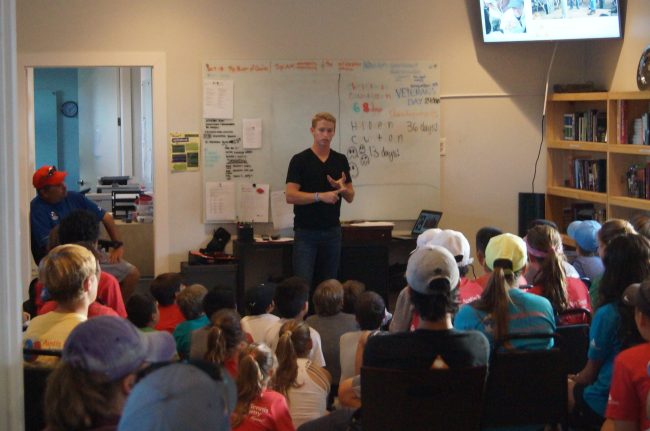Alumni Updates: Meghan O’Malley Checks In From U.S. Naval Academy
Greetings from Annapolis and the US Naval Academy! I hope that you and the entire ATA community are doing well!
We are in the midst of Beat Army Week – it’s a fun, intense week full of crazy pranks and “spirit missions” in the middle of the night, all leading up to the game on Saturday in Philadelphia. The game represents an exciting day for Navy and Army Football as well as our country.
I’ve been pretty busy these past 18 months! My Academy experience started on I-Day in June 2016, with Plebe Summer – six weeks of the most strenuous physical and mental training I had ever encountered. As tough as it was, I felt prepared because of my time at ATA. I took with me the mental training tools I learned from our ATA coaches and practiced on the court.
As tough as Plebe summer was, my Plebe Academic year (or Freshman Year) was tougher. I balanced taking 20 credit hours with military and tennis team requirements. Academics at the USNA are very challenging and like nothing I’d ever experienced. My first week of chemistry covered what I experienced during an entire semester in high school. The focus is on math and science, and while I’m a Political Science major, I still must take 4 semesters of chemistry, physics, and calculus. Midshipmen are required to graduate in four years so typically midshipmen take 18-20 credit hours each semester. There are no breaks for athletes.
Playing tennis for the Navy is a dream come true, but where it was my focus in high school, it is now a very small part of my overall Academy experience. Our practices are much shorter than other teams primarily because of the military and academic requirements. I’ve come to appreciate what the coaches at ATA always told us. Playing tennis is a privilege and I am fortunate to be able to this as well as my experience at ATA and College Prep to prepare me for life beyond tennis. I use the lessons I’ve learned on the tennis court to position me to achieve success in all aspects of my life.
Military requirements are a huge part of my Academy life. Not only do I take classes like navigation and seamanship, but I have real military duties like standing watch, marching in parades, and training exercises. During my Plebe (freshman) Year, I was at the con of a Naval Vessel, sailing in the Chesapeake Bay.
Last summer, I spent a month on the USS Normandy, a navy cruiser in our Atlantic Fleet. I lived and worked among enlisted men and women and saw first-hand the dedication and hard work required to keep our Navy strong. I learned that a Navy ship can be a very complex and dangerous place to work and if I am to lead in our fleet effectively, I must understand, respect, and appreciate even the lowest ranking members of our Navy. Their success will determine my success, and more importantly, keep us safe in dangerous situations.
As for life as Midshipman, I am part of the USNA student body, called the Brigade of Midshipman. I am part of a company, and I will live on a floor with my company mates for all four years of my time here. We are a team, accountable as a group to each other and to the entire student body of Midshipmen. If one person makes a mistake, we are all punished. We take care of each other and the bonds we have formed are stronger because of it. This year, I have a leadership role in my company which has been a tremendous learning opportunity for me.
As I think back to the last 18 months, I know that I would not be here if it weren’t for ATA. I remember sitting down with Coach Newman when I was accepted to ATA’s Academy program as a 10-year-old. He talked to me about dreaming big and working hard. Those two things enabled me to be here. I think back to all of my lessons with Coach Doug, Coach Kendall, and the teachers at CP. I carry so many lessons with me. Believing that I belong is huge. It’s important to get the little things right. Doing the right thing matters – even when it’s hard, even when no one is watching. Here I’ve had to work harder than I’ve ever worked.
To the players of ATA, I have some advice. Appreciate each moment you are there, even the times that are tough. Challenge yourself as it will prepare you for the next steps in life. Appreciate and commit to your journey. Define success, don’t let success define you. Take care of your teammates. Wear the ATA shirts with pride; they represent that you are part of something greater than yourself. Dream Big.
Go Navy! Beat Army!!
Meghan O’Malley










